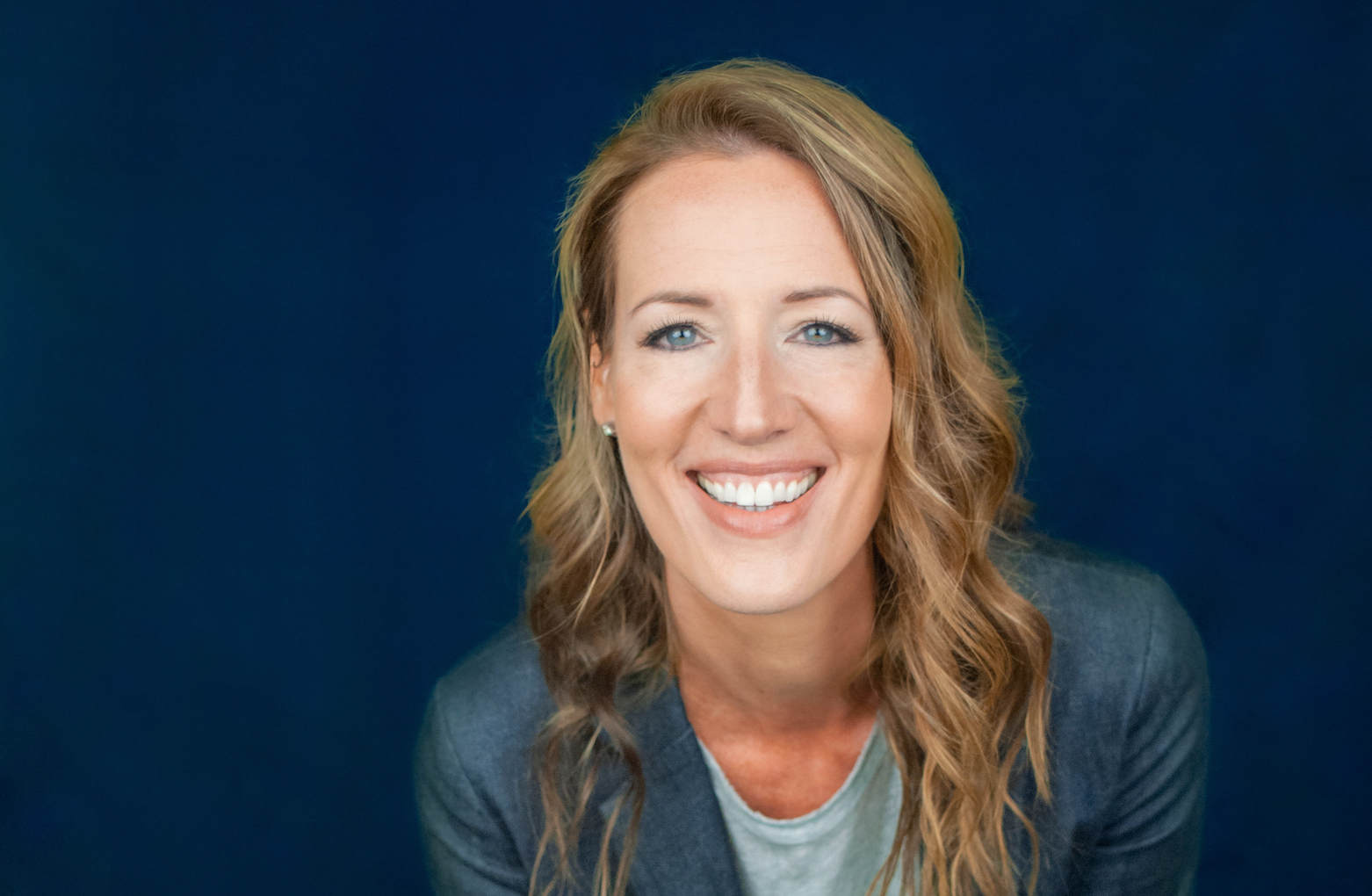
There are no more taboo words in our current society than “sexual pleasure” and “autonomy”, especially when it comes to female bodies. With the saturation of online porn, objectified advertising slamming head first into a political culture that is rapidly regressing when it comes to sexual and reproductive health, the landscape is ready for a revolution.
And it is happening fast, thanks to technology, innovation, and companies that are talking directly to consumers about sex, health, bodies and communication in a way we’ve never seen before. According to reports over the past few years, sex tech is a $30 billion industry, set to grow to $122 billion by 2026.
When the Ose vibrator, created by entrepreneur Lora DiCarlo, won an award at the annual Consumer Electronics Show a couple of years ago, it was then stripped of the title, leading to major controversy and organizers recognizing the inherent sexism at play. The award was eventually restored, but the narrative around sex tech has been blowing up ever since. This is an industry that is so needed right now, as it is helping to bridge the gap between a lack of education and information around sex, with the refusal of traditional conservative-minded industries and institutions to recognize the needs of people.
One company that is working for progress in the space is Satisfyer – a sexual wellness company that has revolutionized its category with proprietary and innovative air pressure wave stimulation technology. The brand is working to destigmatize the conversation around sexual health and convert women and men into sexual wellness product users.
We spoke with the brand’s Director of Education, Megwyn White, who is a certified clinical sexologist with over 20 years of experience in the industry. She talked about the need to dismantle stigma around autonomy and sexual pleasure, especially in women, how marginalized folks are already on the forefront of conversations around sexual wellness, and how we need to see more innovation around pleasure for disabled folks.

Let’s first talk about your background as a clinical sexologist. What does your work entail and what do you focus on?
To clarify, I’m a certified clinical sexologist and Sex Coach. I’m not licensed to practice in a clinical setting, but am able to provide resources that can help support people in their journey around navigating the field of sexual wellness. My work as a sexologist is primarily to focus on research and education within the Sexual Wellness field. I work as a coach to help couples and singles boost confidence and provide resources towards achieving a healthy sexual lifestyle.
I also provide embodiment coaching for those that feel they have lost touch with their sensuality and ability to orgasm. I utilize my expertise as a bodyworker, yoga practitioner, and somatic guide to develop sensual lifestyle strategies that encompass self-care and healthy touch strategies in service of releasing shame and to help sensual expression as a source of power and strength. I am passionate about helping people feel safe and confident in their own skin regardless of race, gender, or background and work to honor the depth of vulnerability that is present in every experience.
As the director of education for Satisfyer, what does your role involve and how have you been interacting with customers?
I focus on helping consumers and our retail partners learn how to use the products more effectively. We have been working hard to also expand the conversation around sexuality to highlight Sexual Wellness as a key component to daily life. There are so many benefits to tending to one’s sexuality including boosting confidence, libido, releasing anxiety and managing stress, and even beauty that people are only beginning to learn about.
We participated at CES (Consumer Electronic Show) last year, where we were able to launch our newest innovation the Satisfyer Connect App, as well as a new range of products that help to support singles and couples stay connected, even with distance as a barrier. I had a lot of fun introducing our technologies to consumers and sharing with them the value of our products. I even was able to introduce many consumers to an anatomical model of a clitoris, which blew many people away. It was incredible to be immersed in a space of innovation alongside major tech brands. I think that it really helped to open people’s minds up to the potential within the Sexual Wellness category.
We have also been partnering with Kinkly, a leading sexual wellness resource, to provide ongoing engaging education for the public that explores relevant topics around sexuality. We partner with a range of other sexual educators to develop webinars, articles, and quizzes that open people’s minds on how they can access sexuality within their daily lives, and boost intimacy with themselves and their partners.

The sexual wellness and pleasure industry is growing very fast, but there is still a lot of stigma. Why do you think this is?
I think the majority comes from the gap in education, and cultural stigmas that are taught at young ages. Without intervention, these tend to stick overtime. There are only 29 states within the US that currently require sex education in schools, and none of these programs include comprehensive learning around pleasure or consent. These programs tend to focus on fear-based education in relation to STDs, STIs, and preventing unwanted pregnancy.
So more often than not, our youth are receiving mixed messages from media, porn, and a lack of understanding on how their bodies experience healthy authentic sexuality. This can be incredibly confusing especially at a time when their bodies are changing, and hormones are surging. It’s all too common to respond to these pressures by suppressing their sexuality or modeling sexuality based on what they see in porn or the media. Without a bridge to sexual education, this confusion will often persist. However, I do see a shift within the last decade to help re-integrate sexuality as a key component to wellness especially for women who are reclaiming their sexual power.
It’s clear we still have a long way to go when it comes to education around sexual health in the US. How is Satisfyer working to empower customers with its messages about sexuality?
Satisfyer at its core is a brand that is focused on creating access to pleasure. We focus on creating products and education meant to invite curiosity and play as people learn about their bodies. In particular, our best-selling product features our proprietary technology (air pulse) which focuses on indirect stimulation of the sensitive nerve endings of the clitoral glans. This flagship technology has helped us bridge the gap for those with the female anatomy to learn the often-hidden understanding of the true depth and power of the clitoris, which extends deep within the body. It is key to female arousal that has so often been mis-understood, but now we have the technology along with the education and science to help demystify the clitoris.
Now, consumers can learn about the complexities and power within the female body to experience new dimensions of self-pleasure. We are proud to be leading the charge to bring this education to a mainstream market as the first brand to be featured in print advertisements, and features within commercial print magazines such as Cosmopolitan, and Glamour. Women and marginalized communities are particularly leading the charge around Sexual Wellness. I think it’s a trend that points to a shift in the architecture of cultural power, since sexuality has always been the key to expressing our voices and power.

The thought of women having autonomous pleasure and controlling their sexual desires is still very taboo in society. How does a Satisfyer product put the control back in women’s hands in a world that is still hostile to our pleasure?
So much of the taboo around women experiencing autonomy around their pleasure and sexual desires comes from ages of oppression rooted in an insecure patriarchal society that needs women to be dependent on men to meet their sexual needs. We can see this in the rise of sexual care devices that were an outgrowth of the porn industry and were first called “novelties” and “sex toys”. Inherent in the names is a need to diminish the value of these products, which most likely stemmed from not wanting to create insecurity in males who were predominately designing them.
We also saw in this first iteration of the market that products naturally fetishized phallic forms which dominated the space. In terms of innovation, there was very little attention placed on how these products interacted with female bodies and were made more as extensions of male dominated world. Satisfyer has been working on changing the lexicon and reaching a mainstream audience through both innovation and education.
Evolving the messaging around Sexual Wellness to also be more inclusive towards men is also a vital means of breaking taboos and creating an inclusive space for men to feel that they are not being “replaced,” but rather invited to higher levels of erotic exploration and play. Autonomy is important for both sexes to indulge in not just sex, but great sex. Women’s sexuality tends to be more complex, which can be intimidating for men. As women develop a keener sense of what turns them on through a more autonomous space, they can actually help in becoming more effective communicators and help to bridge the sensual divide which is ultimately rooted in insecurity and fear.
In a recent survey we conducted with The Harris Poll, we learned that nearly one-third of females (31%) feel too embarrassed to purchase a sexual pleasure device. We are working to shift that mindset. Satisfyer has been leading the charge in developing products that are focused on women’s pleasure. Our Satisfyer Pro 2 and range of Air Pulse technology products have enabled women to experience pleasure in a way that no other technology has been able to. Because it utilizes indirect pressure waves to stimulate the clitoris, it helps to unlock the sensitive 8,000 nerves without over-stimulating.
Satisfyer offers an erotic ecosystem of both products and have added app technology to a new range of products soon to be released. We’ve developed all of our technologies, and in particular our Satisfyer Connect App, to help enhance personal autonomy while also bridging the gap between partners. In essence, our app focuses on enhancing connection of all kinds.
We believe that products will never replace human touch but rather enhance a person’s ability to connect with themselves which naturally lends to connecting with their partner’s more authentically and intimately. Everyone desires authentic connection regardless of gender or even libido.

Where do you hope the sexual wellness industry will be in 10 years?
Sexual self-care will most likely be a theme that will emerge throughout the next 10 years, with more extensive research helping to show the connection between sexuality and the reduction of anxiety, depression, and loneliness. Because of this, I think we will see a rise in the intersection between beauty and sexual wellness to fill the need of consumers who want to experience their sexuality as an extension and root source of their beauty. In a recent survey we conducted with The Harris Poll, we learned that 70% of Americans say that there are a lot of benefits associated with a healthy sex life.
I hope that Sexual Wellness will be elevated to other forms of wellness similar to the trends we’ve seen with the rise in yoga, Pilates, and meditation. Instead of simply relying on technology to meet the sexual needs of consumers, I’d love to see us explore how we as people can develop our own nervous systems to meet technology and experience higher levels of pleasure. In my ideal vision, I see conferences which are devoted to deepening our understanding of sexuality alongside the innovation market that helps bridge people to how sexual self- care can be an ongoing practice supported by devices and education to ultimately unlock imagination and new dimensions of wellness.
I’d love to see sexual wellness also merge more with creativity. I’d love to see new sexual wellness supporting markets often left behind like the disability community or even those struggling with issues like ADHD and autism. I think that meeting the needs of these less explored markets will also lead to innovations that the mainstream world will reap rewards from as well.
I’d also love to see more research around sexual trauma emerging as Sexual Wellness continues to grow. I see many opportunities for these types of products to be utilized therapeutically by consumers wanting to develop more agency and integrate their traumas.
Lastly, I’d love to see a world in which the Sexual Wellness market is no longer taboo. But simply a feature of our lifestyle, with products readily available wherever you shop for health and wellness.


















One thought on “Talking Sex Tech, Autonomy & Pleasure With Satisfyer’s Director Of Education And Clinical Sexologist Megwyn White”
Comments are closed.